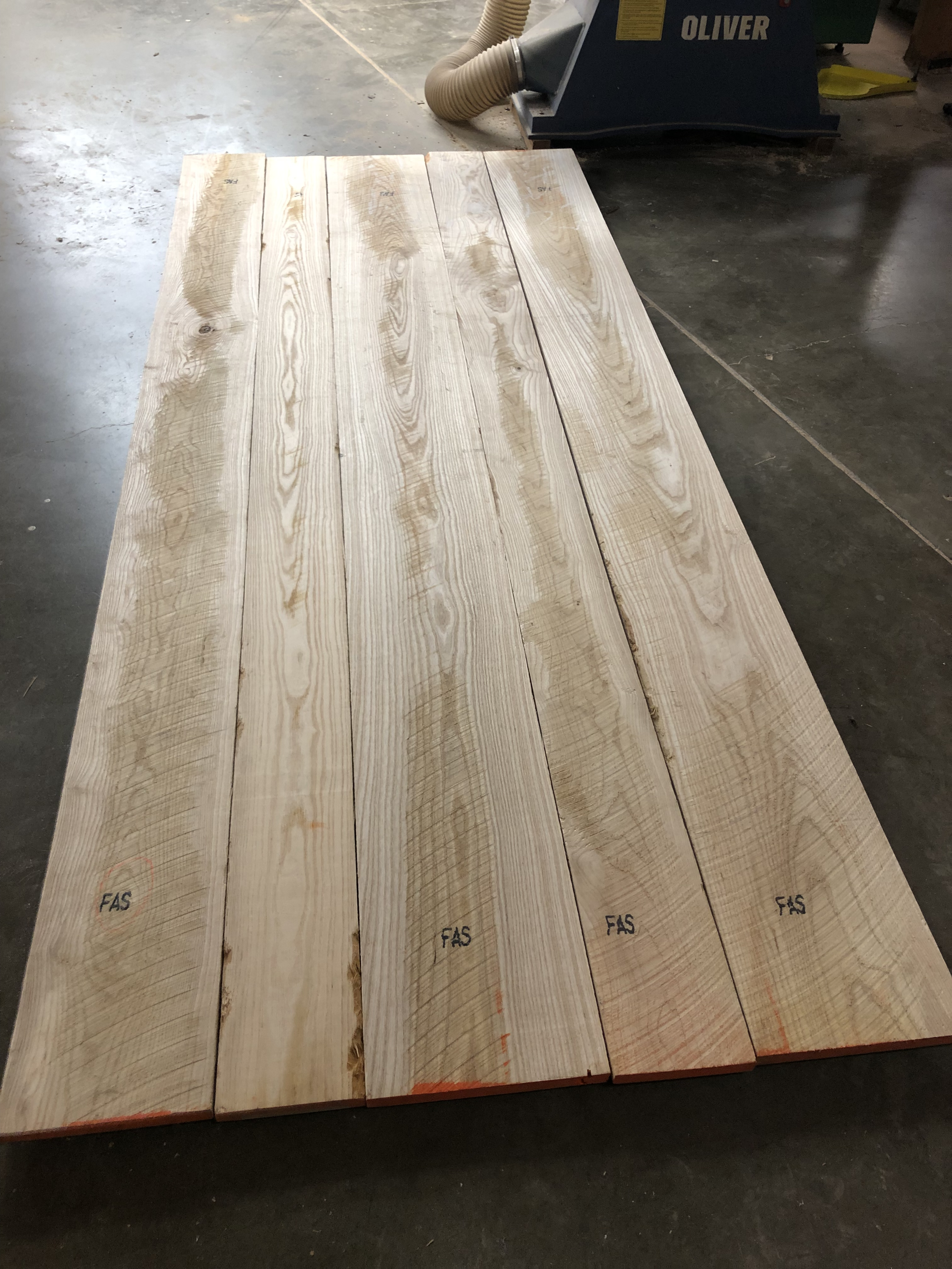Curved Leg Dining Table
This project was inspired by a circular table my client had seen, which featured four straight metal legs that intersected in a single point below the table. To bring this inspiration into the design of an entirely wooden dining table, I suggested curving the legs to give it a more organic appearance as well as to create two separate intersections, increasing the strength of the table by allowing more continuous wood grain to pass through the intersections.
There are several ways to create bends in wood, and for this project I went with a process called bent lamination, whereby thin strips of wood capable of bending to the desired radius are laminated together in a bending form. Once the glue has dried, these strips hold their form together, creating a stable curve. With the right preparation and consideration of grain, the finished lamination can be difficult to distinguish from a single piece of wood.
For the tabletop, I assembled a panel from ash boards after testing many permutations to find the most symmetrical arrangement. Cutting a perfect circle is simple, but to cut a perfect oval a surprising tool is necessary: a Trammel of Archimedes or “do-nothing machine.” This toy, when scaled up, can be used to guide a router in a geometric path. I profiled the underside of the table’s edge using hand tools and sandpaper and attached it to the legs with bolts set into elongated holes to allow for natural wood movement.






